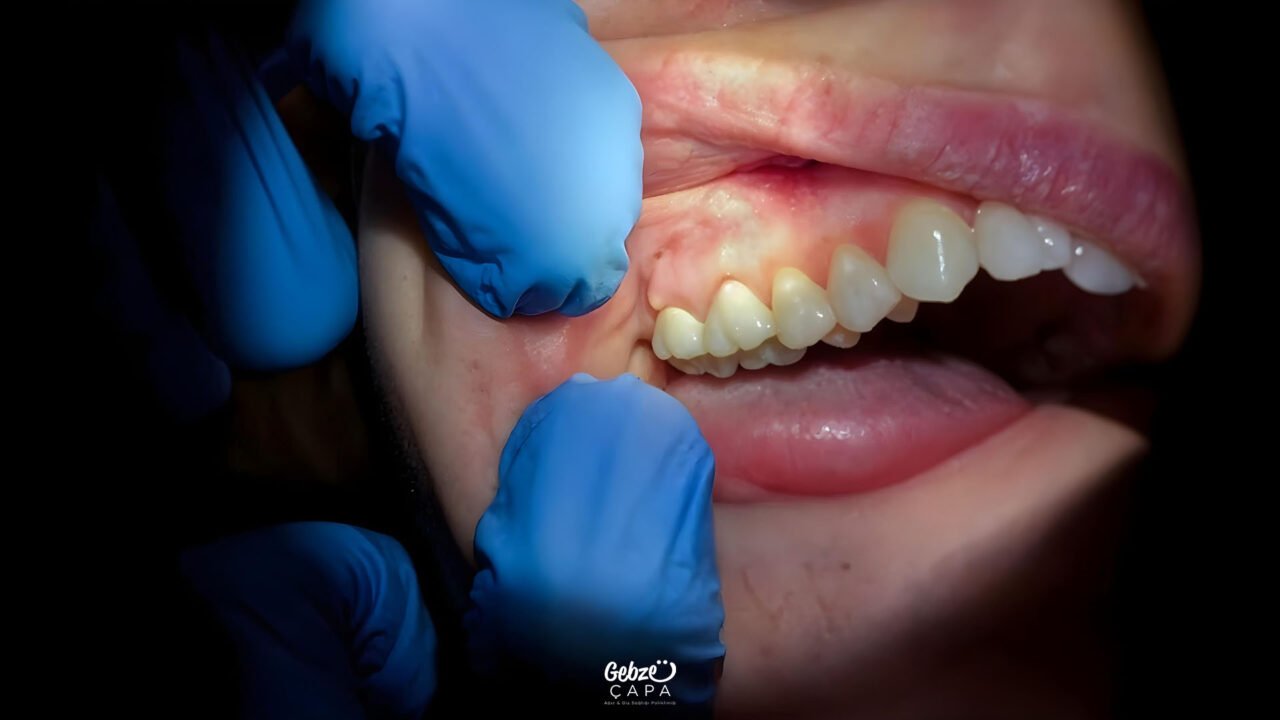Abscessed Toothache
Toothache is a disorder that almost everyone encounters at some point in their life and seriously reduces the quality of life. While this pain may be felt as a slight ache from time to time, it can sometimes become unbearable and negatively affect the person’s daily life. Toothache can have many different causes; These include tooth decay, gum disease, tooth fractures, nerve inflammations and even sinus infections. However, one of the most common and serious causes of toothache is abscess formation.
An abscess is an inflammation caused by bacteria that usually accumulates at the root of the tooth or around the gum. Over time, this causes an infection to accumulate in the tooth root or gum, followed by intense pain. The most dangerous aspect of an abscess is that it can pave the way for serious infections that can threaten not only oral health but also other parts of the body. If left untreated, this infection can enter the bloodstream and lead to more serious complications.
What is an abscess?
An abscess is the accumulation of inflammatory fluid in an area of the body as a result of a bacterial infection. Abscesses on teeth and gums usually occur at the tooth root, gum line or surrounding tissues. The formation of an abscess develops as part of the body’s mechanism to fight infection. By sending white blood cells to the site of infection, these cells fight the infection by creating pus fluid to isolate it and prevent it from spreading. However, although this is a protective mechanism for the body, it can lead to severe regional pain and serious discomfort.
Tooth abscesses usually occur in two ways: at the tooth root or in the gum. Tooth root abscess (periapical abscess) occurs due to inflammation of the nerve tissue of the tooth. It mostly occurs as a result of deep caries or trauma to the tooth. On the other hand, gum abscess (periodontal abscess) is caused by infections in the gums. This condition is often associated with gum diseases and develops when bacteria accumulate in the gum pockets, causing infection.
Abscess formation not only causes pain; It also comes with symptoms such as swelling, redness, increased temperature and even tooth sensitivity. As this condition progresses, the risk of the infection spreading increases and can lead to tooth loss, jawbone infections, and more serious health problems. If left untreated, the infection can enter the bloodstream and cause life-threatening conditions such as sepsis.

The main cause of abscess-related toothache is infections in the tooth or gum. These infections are usually caused by tooth decay, tooth injury, or gum disease. Tooth decay occurs when bacteria accumulated in the mouth erode the tooth enamel and reach the deeper layers of the tooth. When bacteria progress to the soft tissue called pulp inside the tooth and cause an infection there, this infection can turn into an abscess over time if left untreated.
Similarly, gum disease can lead to tooth abscess. Bacteria that accumulate in the pockets formed as a result of inflammation of the gum tissue and separation of the gums from the teeth over time can cause gum infections, and these infections trigger the development of abscesses. Additionally, fractures or cracks in the tooth allow bacteria to reach the inside of the tooth more easily. This can lead to an infection extending to the root of the tooth and resulting in an abscess. In addition to all these, poor oral hygiene is one of the main causes of abscess formation.
Factors such as inadequate tooth brushing, not using dental floss and not going to regular dentist check-ups lead to the accumulation of bacteria in the mouth, and these bacteria cause infection in the teeth or gums and accelerate the development of abscesses. These factors that contribute to the formation of an abscess can lead to severe pain, swelling and even general health problems as the infection progresses. Therefore, regular oral care and maintaining dental health play a key role in preventing serious dental problems such as abscess.
What are the symptoms of abscess?
Toothache caused by an abscess is usually felt sharply and continuously. However, the symptoms of a tooth abscess are not limited to pain alone. Below are the main symptoms that indicate an abscess:
- Severe Toothache: An abscess causes intense toothache. Pain can often radiate to the jaw, ear and neck. The pain may increase while eating or consuming hot or cold drinks.
- Swelling: Swelling and redness occur in the gums due to abscess. Swelling may appear on one side of the face, making chewing difficult.
- Bad Taste in the Mouth: When the abscess bursts, the inflammatory fluid inside can spread into the mouth and leave a bad taste in the mouth. This is an indication that the infection is starting to spread.
- Fever: An abscess can lead to a fever as the body fights the infection. Fever is a sign that the infection is serious and may require immediate medical attention.
- Lymph Node Swelling: Lymph nodes in the neck may become swollen and tender due to infection due to an abscess.
How to relieve abscessed toothache
Treatment of toothache caused by abscess varies depending on the location of the abscess, its size and the severity of the infection, but the main goal is to control the infection and drain the abscess. If the infection has spread or the inflammation is severe, the dentist usually prescribes antibiotic treatment. Antibiotics help control the infection and shrink the abscess, but since they are not enough on their own, they are often used in combination with other methods. One of the most commonly used treatment methods is abscess drainage.
In this procedure, the dentist opens the area where the abscess is located and drains the inflamed fluid, thus relieving the pain and preventing the spread of the infection. If the infection is located in the tooth root, root canal treatment is performed to save the tooth; In this treatment, the infected pulp is cleaned and the root canals are disinfected and filled. However, in cases where the tooth is seriously damaged and cannot be saved with root canal treatment, the abscessed tooth may need to be extracted. Tooth extraction is a preferred option, especially when other treatment methods are ineffective or the tooth is too damaged to be saved.

How to Prevent Abscess
It is extremely important to develop good oral hygiene habits to prevent abscesses and toothaches. Here are some tips to help prevent abscess formation:
- Brush your teeth regularly: Prevent bacteria from accumulating on teeth and gums by brushing your teeth with fluoride toothpaste at least twice a day.
- Use dental floss: Floss helps remove plaque and food debris from areas where a toothbrush cannot reach.
- Have regular dental check-ups: By visiting your dentist regularly, you can detect and treat dental problems at an early stage.
- Eat healthy: You can reduce the risk of tooth decay by staying away from sugary and acidic foods.


